INTRODUCTION
Urinary calculus is a stone-like body composed of urinary salts bound together by a colloid matrix of organic materials. It consists of a nucleus around which concentric layers of urinary salts are deposited. Acute passage of a kidney stone from the renal pelvis through the ureter gives rise to pain at times so excruciating that it has been likened to the discomfort of childbirth.
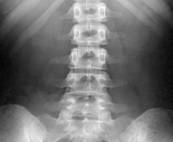
YOGA AND RENAL STONES

YOGA POSES FOR RENAL STONES
Raised Feet Pose
A Double Leg Raise is similar to a Single Leg Raise, only this time, you will raise both legs. In doing this Yoga Pose, make sure that the full length of your back is resting on the floor and your shoulders and neck are relaxed.
Wind Relieving Pose
The term Pavanamuktasana comes from the Sanskrit word 'pavana' which means air or wind and 'mukta' which means freedom or release. The Wind Relieving Pose works mainly on the digestive system. Specifically, it helps in eliminating excess gas in the stomach.
Peacock Pose
This is a wonderful Asana for improving digestion. The whole abdominal organs are properly toned and stimulated well by the increase of intra-abdominal pressure. Sluggishness of liver or hepatic torpidity disappears. It tones the bowels and removes constipation (ordinary, chronic and habitual). It awakens Kundalini.
Cobra Pose
This asana strengthens back, abdomen, arms, and shoulders, and increases flexibility in the middle of the back. Improves oxygen intake, increases circulation to the spine and improves digestion.
Bow Pose
The alternating stretching and releasing of the abdominal muscles increases blood flow to this area and aids all sorts of digestive disorders and discomforts. The Bow works all parts of your back simultaneously. The pose is so named because as you hold it, your body is bent back like a bow and your arms are held straight and taut like a bowstring.
Plough Pose
A lot people complain about stiffness on the neck and lower back as a result of stress and wrong posture. In the Plough Pose, you stretch the neck and the lower back muscles. The Plough is also good for your digestion and it strengthens the kidneys, the liver and the gall bladder.
YOGA ASANAS FOR RENAL STONES
SHAVASANA
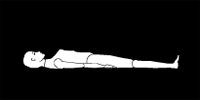
Shavasana is relaxation of body and mind in the position of lying on the back. This asana helps in relaxing mind and body and helps in restoring energy. It is a relaxing posture intended to rejuvenate one's body, mind and spirit. While shavasana is a good way to reduce stress and tension it is not recommended for meditation as it has a tendency to induce sleepiness.
Steps
• First of all, you need to sit in the Dandasana. Sit flat on the ground, with your back straight and your legs stretched out in the front.
• First of all, you need to sit in the Dandasana. Sit flat on the ground, with your back straight and your legs stretched out in the front.
• Bend you knees lightly and then gradually lean back onto your elbows, in the process lying down evenly along your spine.
• When your back is parallel to the floor, straighten out the legs as well. Moving one of the legs at a time, carefully place them on the floor. Try to place your legs the center of the back of the thighs and calves.
• Start to relax slowly, first letting your feet fall out to the sides and then, turning your arms outwards. Rest the arms, on your sides, in such a way that the palms face up.
• Stretch the back of your neck and try to rest your head on the center of the back of the scull. Now, draw your shoulders away from your ears and let them fall back in a comfortable position.
• Close your eyes and take several deep breaths, feeling your body become relaxed and the tension go away.
• Let go of your body completely and allow your breath to become soft, regular and quiet.
• Aiming at one of the parts of your body, let it begin to relax and then move to the other parts.
• At the end of the asana, stop relaxing consciously and let you body remain in the peaceful mode, for a few minutes.
MATSYASANA
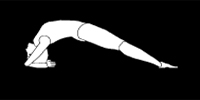
Matsya in Sanskrit means fish. One immediately identifies this asana with the figurative relevance like any other hatha asanas. But here the asana is suggestive of the quality of floating like a fish - a state that's induced by assuming this posture.MatsyasanaTraditional texts state that Matsyasana is the "destroyer of all diseases." This asana is therapeutically helpful in constipation, respiratory faculties, fatigue and anxiety.It's also good for preventing mildly recurring backaches before they go worse.
Steps
• Assume padmasana If it is difficult, assume a comparable posture (Swasthikasana or Sukhasana).
• Bend backwards and touch the ground with the back of your head while not changing the position of your legs.
• Use hands to give support to body so that your body doesn't fall flat. While you lay backwards while keeping the legs as in padmasana, your body assumes the same of a fish, with the legs forming the tailfins. The back, shoulders, neck, most part of head and parts below knee will not touch the ground.
• Now extend your hands and grasp your big toes. Right hand grasps left big toe, which is on the left side of the body.
• Breathe slowly while in Matsyasana pose.
• Take hands backwards and place them on the ground as a support. Slowly raise your head and come to Padmasana pose.
ARDHAMATSYENDRASANA
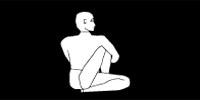
This is highly useful to control diabetes and kidney troubles. This posture makes the spine elastic. Nerves of the spinal column are toned up. This improves the efficiency of the abdominal viscera, such as liver, spleen, pancreas and the intestines. This eliminates the problems of constipation and dyspepsia (loss of appetite). Artha Matsyendrasana is a wonderful asana and gives you a very high standard of health when practiced in combination with the other asanas of forward and backward bending.
Steps
• In this posture twist the waist laterally.
• Exhale and twist the waist in this posture.
• Inhale after you return to normal sitting position.
• Symmetry should always be maintained.
• If you twist your body six times to the left, you should also twist your body six times to the right.
VAJRASANA
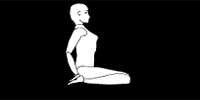
Vajrasana makes the body exceptionally strong and healthy. Vajra means thunderbolt in Sanskrit. During this asana, feel the sensations in the body as you move them. Do the Movement slowly and in a relaxed manner. Inhale and exhale slowly. While drawing the abdominal region inwards and expanding the chest, focus the attention on these body parts. The way the muscles move must be felt. Relax before, during and after the yoga posture.
Steps
• With knees, ankles and big toes touching the ground, take a kneeling position.
• One should sit on the heels and place palms on the knees.
• The Spine should be erect and breath should be deep.
• Draw the abdominal region inside and expand the chest.
ASTROLOGY
Yoga is a Sanskrit term which means 'to unite'. What is being referred as the 'Yoga' in English, is more commonly known as 'Asana' in Sanskrit, which means different physical postures and poses. It is seen that people of a particular sun sign find it beneficial when they practice certain yoga asanas.According to astrological reports for yoga asanas the above mentioned asanas are said to be effective for those who come under the following zodiac sign.
• CANCER
• LIBRA